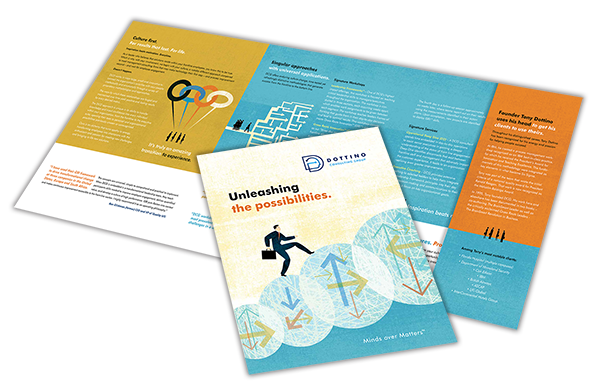Patient Experience and Financial Survival in Hospitals
by Marshall Tarley
“I have lung cancer. My medical care is excellent but the customer service stinks.”
That was the headline on the FoxNews website as famed television journalist John Stossel announced to the world that he had lung cancer. Though he was in the hospital ranked No. 1 by U.S. News & World Reports, he went on to say, “…as a consumer reporter, I have to say, the hospital’s customer service stinks. Doctors keep me waiting for hours, and no one bothers to call or email to say, ‘I’m running late.’
“I get X-rays, EKG tests, echocardiograms, blood tests. Are all needed? I doubt it. But no one discusses that with me or mentions the cost. I fill out long medical history forms by hand and, in the next office, do it again. Same wording: name, address, insurance, etc. In the intensive care unit, night after night, machines beep, but often no one responds. Nurses say things like ‘old machines,’ ‘bad batteries,’ ‘we know it’s not an emergency.’ Some of my nurses were great – concerned about my comfort and stress – but other hospital workers were indifferent. The hospital does have ‘patient representatives’ who tells me about ‘patient rights.’ But it feels unnatural, like grafting wings on a pig.
“When the customer doesn’t pay, customer service rarely matters.”
Customer service does matter in hospitals – it matters a great deal. In fact, the financial survival of a hospital depends heavily on patient satisfaction. Reason #1 – A key source of revenue for hospitals is Medicare reimbursements for our aging population, and Medicare reimbursements are heavily dependent on patient satisfaction scores. On top of that, Medicaid reimbursements are similarly tied to patient satisfaction.
The difference between being in the 75th percentile in patient satisfaction ratings, compared to below that 75th percentile, can mean a gain or loss of many millions of dollars to a hospital. Rating agencies regularly survey patients to assess their experience, while other agencies regularly come into hospitals to rate “employee engagement,” believed to be a key indicator leading to the patient experience.
Reason #2 – Emergency rooms are central feeders of patients into hospitals. Many reading this, including me writing this, have experienced poor performance in ERs – long waiting times, poor communication and less than quality care. This leads patients to go to other hospital ERs, leading to a loss of patients and loss of revenues.
Some hospitals have gone as far as hiring hospitality executives from leading hotel corporations to try to help them fix the problems. But, hospital rooms are not hotel rooms or resorts. People aren’t looking for their beds to be turned down at night or chocolate on their pillows. Though that would be nice, it’s not the kind of thing that will provide comfort and relief to a patient who is sick or injured and may not understand what is being done to her, for her or why. Perhaps, that is why so many of these efforts leave patients like John Stossel and many others despondent over their patient experience.
Recently, after a long career in many different business disciplines, including building a leadership development program for an internationally renowned organization, I started working with a good friend, Tony Dottino, in his consulting business. He has turned much of the focus of his work to hospitals and healthcare. When I heard him tell the following story to a workshop group, I totally understood his passion for this work.
“Thirteen years ago,” he began, “as I sat by the bedside of my dying former wife, she asked me to make her a promise. She said, ‘You have a gift. I want you to promise me that you will take that gift into hospitals, so no one will ever again be treated the way I’ve been treated.’
“From that day on, I turned the focus of my work to hospitals and have been working with these institutions ever since.”
Working with Tony, I have seen his effectiveness first hand and in the metrics he has changed within hospitals. The work he does, on one hand, focuses on communication between caregivers and the patient, with an understanding of how the brain interprets communication – words, tone, physiology and mood. But, he takes a giant leap beyond that to work with executives, managers and the hands-on caregivers, doctors, technicians and environmental staff, to transform the culture of the organization to one in which communication flows through all levels and disciplines, trust is engendered and frontline caregivers are given the innovation skills and tools to innovate change, with bottom line results, improved care and satiating the patients craving to know and understand their situation, progress and treatments. When I walk through the halls of some of these hospitals, nurses, doctors and even CEOs and COOs physically embrace Tony with a big hug.
In some cases, these hospitals have more than doubled their patient satisfaction scores. That’s great news for these hospitals, and more importantly, for the patients who visit these institutions.
As just one example, in one ER, he helped them reduce wait time from 90 minutes to 30 minutes and improve along a whole host of areas that bring comfort and quality care to patients.
Yes, John Stossel’s experience is, unfortunately, all too common. But, change is coming through this man and those who can truly offer anything resembling his approach and his success with hospitals and healthcare and the people working in these institutions.


